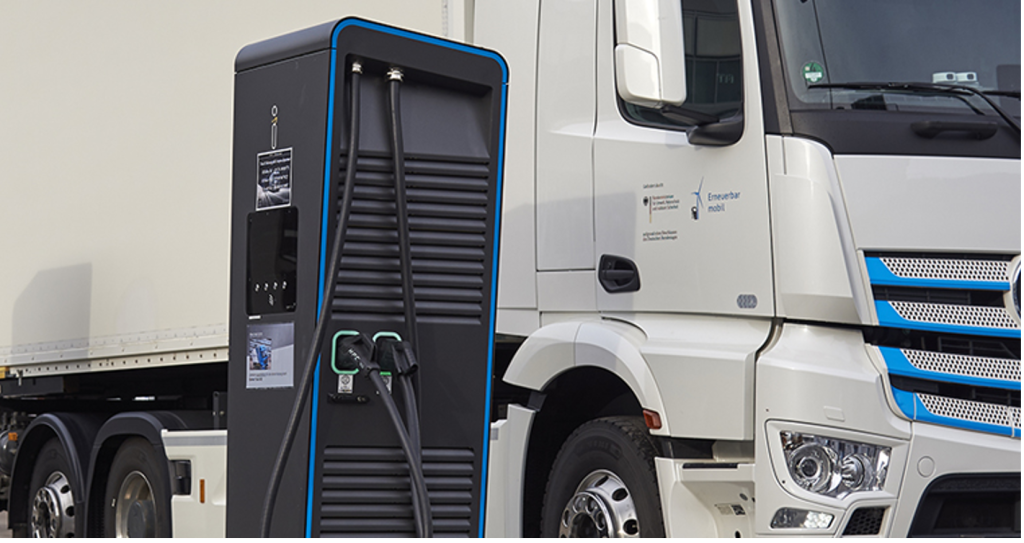5. Electric heavy duty vehicle (HDV) charging
Efficient EV charging for heavy duty vehicles in line with Scotland’s 2030 targets. Compare suitable charge points, from 22kW AC to high-powered 150kW DC units.
Well-designed charging infrastructure is especially important for electric HDVs. They require more space and higher-powered charge points to support their bigger batteries. This means you cannot rely on the public charging network.
If you are a public sector organisation operating HDVs, you will need to switch to electric HDVs to meet Scottish Government’s target for public sector organisations to stop procuring ICE vehicles from 2030. For more information, see zero-emission HDVs.
Installing DC charge points for faster charging is common, but you can still consider AC charging.
- Example: a Volvo FE can fully charge in 1.5 hours at 150kW DC or 6-8 hours at 22kW AC (Freight in the City, 2021).
An alternative solution is to use two 43kW AC chargers that charge the vehicle simultaneously, providing 86kW charging capacity.
The charge point you install will depend on the model of HDV you adopt, its charging restrictions, and how much downtime it has available to charge. Electric HDVs’ mileage range on a full charge is increasing and should soon meet the daily mileage requirements of all your HDVs. See here for a full list of electric HDVs with approximate ranges.
For vehicles with suitable down times, a lower-rated charge point (such as a 22kW AC unit) can be used. However, you may also need a higher-rated charge point of up to 150kW or more depending on vehicle duty cycles. These charge points can take up a significant portion of your available electrical capacity. You may need to arrange with your distribution network operator (DNO) about increasing your available capacity in the future. The connection required to accommodate very high-powered DC chargers is likely to incur standing capacity charges.
